
The first chance I got, I drove the 100 kilometres to the farm. The nest was on a branch on the eastern side of an acacia tree, about 50 metres from the riverbank at the foot of a rocky outcrop and between 10 and 11 metres above the ground. I established that the pale morph was the female and she was beautiful. The male was also quite a handsome fellow, slightly lighter in colour than the usual dark brown. To observe them I would need a hide, so we erected scaffolding, some nine metres high, halfway up the rocky outcrop and about 20 metres from the nest tree. We covered the top section with 80 per cent shade cloth and finished it off with camouflage netting. We spread the work over three weeks so as not to disturb her too much. However, she was unperturbed and continued incubating the egg, lying flat in the nest and not leaving once, while we worked.
The egg hatched sometime during the second week of November and although I could not see into the nest, the pair’s behaviour changed and I could see feeding activity. An unseasonally late and severe cold front hit Limpopo on 18 November, with rain and strong winds accompanied by very low temperatures. I was up in the hide when the storm hit and due to safety concerns decided to call it a day. The following day I received word that the anchor wires of the scaffolding had broken, the hide had blown over and the parents had stopped feeding. The eaglet had not survived the storm.
This story is from the May/June 2021 edition of African Birdlife.
Start your 7-day Magzter GOLD free trial to access thousands of curated premium stories, and 8,500+ magazines and newspapers.
Already a subscriber ? Sign In
This story is from the May/June 2021 edition of African Birdlife.
Start your 7-day Magzter GOLD free trial to access thousands of curated premium stories, and 8,500+ magazines and newspapers.
Already a subscriber? Sign In

EXPLORING NEW HORIZONS
Keith Barnes, co-author of the new Field Guide to Birds of Greater Southern Africa, chats about the long-neglected birding regions just north of the Kunene and Zambezi, getting back to watching birds and the vulture that changed his life.

footloose IN FYNBOS
The Walker Bay Diversity Trail is a leisurely hike with a multitude of flowers, feathers and flavours along the way.

Living forwards
How photographing birds helps me face adversity
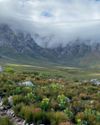
CAPE crusade
The Cape Bird Club/City of Cape Town Birding Big Year Challenge

water & WINGS
WATER IS LIFE. As wildlife photographer Greg du Toit knows better than most.
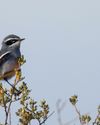
winter wanderer
as summer becomes a memory in the south, the skies are a little quieter as the migrants have returned to the warming north. But one bird endemic to the southern African region takes its own little winter journey.
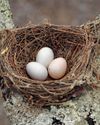
when perfect isn't enough
Egg signatures and forgeries in the cuckoo-drongo arms race
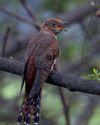
Southern SIGHTINGS
The late summer period naturally started quietening down after the midsummer excitement, but there were still some classy rarities on offer for birders all over the subregion. As always, none of the records included here have been adjudicated by any of the subregion's Rarities Committees.
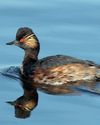
flood impact on wetland birds
One of the features of a warming planet is increasingly erratic rainfall; years of drought followed by devastating floods. Fortunately, many waterbirds are pre-adapted to cope with such extremes, especially in southern Africa where they have evolved to exploit episodic rainfall events in semi-arid and arid regions. But how do waterbirds respond to floods in areas where rainfall - and access to water - is more predictable? Peter Ryan explores the consequences of recent floods on the birds of the Western Cape's Olifants River valley.
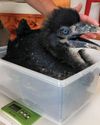
a star is born
It’s every producer’s dream to plan a wildlife television series and pick the right characters before filming.